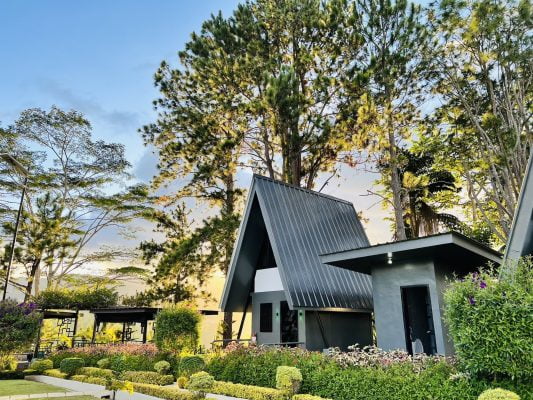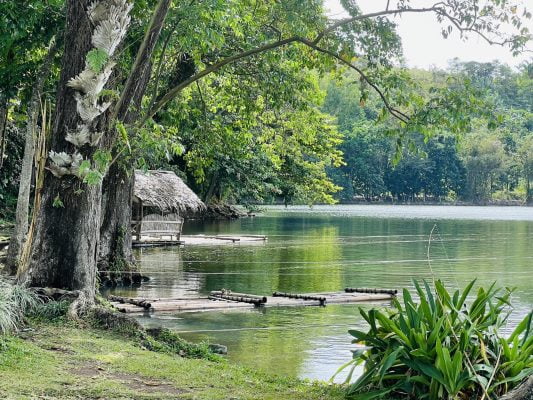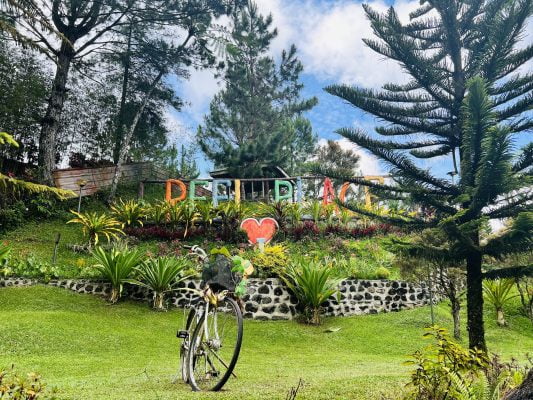
Before embarking on a trip, we always wonder if it’s safe and go to lengths to make sure that we will be. Safety and security are one of the most important considerations in trip planning. If you are traveling to the Philippines, you’d want to make sure that you don’t run into trouble that can possibly get in the way of fun. So is the Philippines safe for travel?
Yes, it is safe to travel in the Philippines now AS LONG AS you are aware of potential risks and take the necessary precautions to avoid or, at least, minimize them. You might ask the following questions: is Manila safe? Can you travel to Davao City? Are there terrorists in the Philippines? Is COVID-19 still a threat to people in the Philippines? Can you walk the streets without getting mugged? These are real questions that need to be asked before deciding to travel.
If you look at visitor arrivals in the last 5 years, numbers have risen considerably. This is a clear indication that people find the Philippines safe for travel. In 2019 alone, the Philippines has reached a record high of over 8 million visitor arrivals. That is a million more than the previous year.
On April 18, 2022, the U.S. Department of State issued a Level 2 travel advisory urging U.S. citizens to exercise increased caution when traveling to the Philippines due to a number of reasons. COVID-19, terrorism, crime, civil unrest, and kidnapping, among them. Scary, right? So let’s break this down one by one.
Health Concerns
Covid-19
The Philippines has recorded close to 4 million positive cases of COVID-19 since the pandemic hit in early 2020. Metro Manila tops the list of areas where the disease is prevalent but COVID-19 is present all over the country. The country was placed under different levels of quarantine, some banning arrivals from countries where the disease is also present. The government has limited domestic travel and stringent rules are in place for testing, isolation, and treatment of the traveling public.
When vaccines became available, the Philippines became the recipient of various donations from different agencies and foreign governments. At least 62% of the country’s total population is now fully inoculated against the virus, including minors aged 5 to 11 years old.
Minimum health precautions like the wearing of face masks and social distancing are still practiced public places. Temperature checks and disinfection are also mandatory. Quarantine restrictions have been lifted and the Philippines is going back to normalcy.
Measles
The WHO declared a measles outbreak in the Philippines in 2018 and the numbers have been rising since. The government has ramped up immunization efforts but has met challenges like resistance and inaccessibility of rural areas. If you’re planning on traveling to affected areas and have not had measles in the past, make sure to have your vaccinations updated. If traveling with small children, make sure that they are also inoculated.
Other Health Issues
Dengue is also a major concern in the Philippines, particularly during the wet season. Mosquitos spread the virus and there is no vaccine yet. You need to take extra precautions like applying insect repellant especially when hiking or visiting areas where dengue fever is prevalent. Polio has also re-emerged in the country after 19 years of being polio-free. The CDC strongly recommends a polio vaccination. There have also been reports of counterfeit rabies vaccines in the Philippines. In case of animal bites/scratches, seek medical advice from a hospital immediately.
Terrorism and Kidnapping
Terrorism is still present in the Philippines but just in a few select areas. The U.S. government still discourages travel to Mindanao, particularly the Sulu and Southern Palawan area where there have been kidnapping incidents in the past. Please secure authorization before traveling to these areas if you are a U.S. citizen. Having said that, there is a very slim chance of a terror attack. The military and police force in the Philippines are very efficient in ensuring this does not happen.
Crime and Civil Unrest
The Philippine National Police has reported a steady decrease in the crime rate from since 2016. Although crimes of opportunity are still present in key cities, the numbers have significantly decreased. You should still be wary of pickpockets when roaming crowded places and avoid the slum areas in Manila. When you arrive at the Ninoy Aquino International Airport and get on a taxi, insist that the driver use the meter. If he/she refuses, ask to be let out. Drivers in Manila tend to abuse the demand for their services and charge exorbitant fees to get you from the airport to your hotel/destination.
Rallies are a regular thing in the Philippines but it is a far cry from civil unrest. Leftist groups express dissatisfaction but civil unrest incidents are very rare in the cities, more so in the provinces. There is little to no chance that you will be caught in one. The recent national elections may incite some electoral protests but these should die down sooner rather than later.
The answer to the question “is the Philippines safe for travel” entails plenty of considerations. All things considered, the country is safe if you do not travel to compromised areas, follow protocols for virus control, and take extra precautions to keep yourself healthy.






